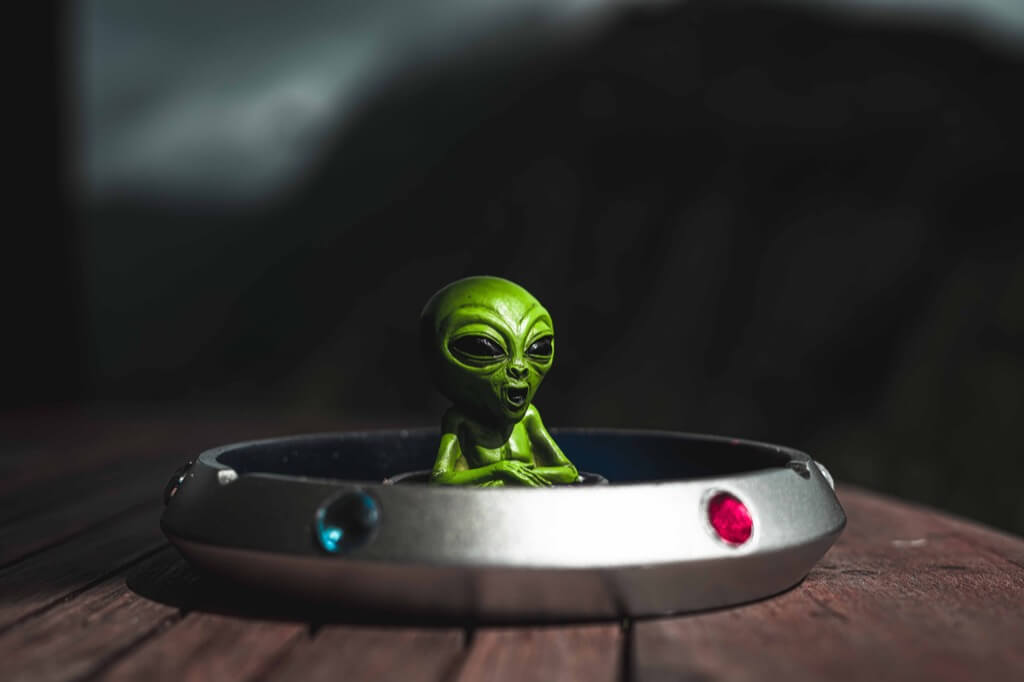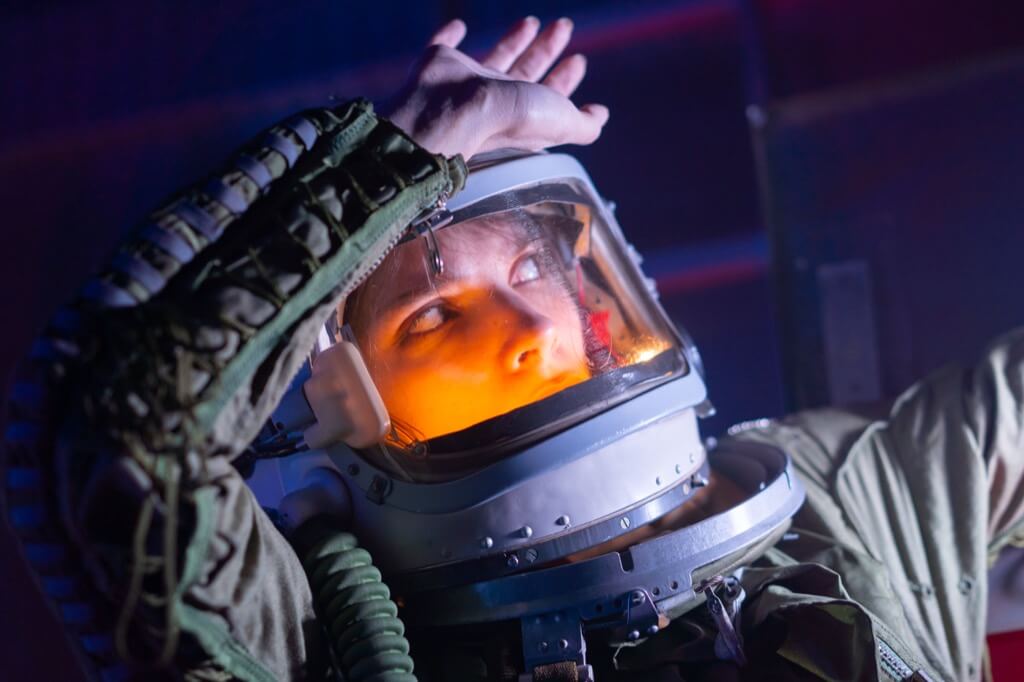In the vibrant universe of linguistic evolution, where words are born and reborn, Africa Nova brings to you a cosmic revelation: we’ve been pronouncing “UFO” wrong!
Language, ever fluid, has a way of surprising us. Remember when many believed “irregardless” wasn’t a word? Or when Dr. Seuss, frustrated with the mispronunciation of his name, settled for “Sue-s” instead of the authentic “Zoy-ce”? And then there’s the intriguing debate on “Wikipedia”: is it “we-key-pedia” or “wick-ee-pedia”?
Steering Our Ship to the Stars, We Spotlight the Saga of Edward J. Ruppelt
A man whose legacy, though cut short by fate at 37, continues to illuminate the field of ufology. His pivotal role in Project Blue Book, an exhaustive Air Force study into the enigma of flying saucers, stamped his footprint on history. But it was his coinage of “Unidentified Flying Object” as an alternative to “Flying Saucer” that added another feather to his cap. And guess what? Ruppelt pronounced the acronym as “Yoo-fo”.
From His Roots, Ruppelt’s Skyward Passion Was Evident
Born in 1923, his illustrious aviation journey began during World War 2, accumulating accolades along the way. His post-war pursuits in Aeronautical Engineering and stints with the Air Force Reserves fortified his passion. But it was during his tenure at the Air Technical Intelligence Center, amidst the fervor of the Korean War, that his dance with UFOs began.
Aiming to understand UFO sightings, Ruppelt’s predecessors, Project Sign and Grudge, had attempted and faltered. Their investigative intent was often derailed by biases and a dismissive attitude toward the very phenomenon they were to study. Reports were sidestepped, explanations fabricated, and the essence of objective intelligence lost. But Ruppelt’s leadership heralded change. With Project Blue Book, he sought to eliminate bias, assess without preconceived notions, and stay true to the essence of every sighting.
Championing clarity, Ruppelt highlighted the inaccuracy of the term “Flying Saucer.” What if the object wasn’t saucer-shaped? The more encompassing “Unidentified Flying Object” or “UFO” was his answer. Yet, even as the acronym soared in popularity, its pronunciation veered off its intended course.
Project Blue Book’s vast scope, despite its challenges, was commendable. With over 4,500 UFO claims investigated under Ruppelt and 12,618 by its end in 1970, the project unearthed various truths. Most sightings were attributed to natural phenomena or experimental aircraft, but 701 remained an enigma – truly unidentified. The official stance? No evidence of extraterrestrial UFOs threatening national security. But Ruppelt, ever the open-minded explorer, pondered the cosmic possibilities till his end.
The “Yoo-fo” revelation, akin to unearthing a linguistic artifact, prompts reflection. In a world where “U-F-O” reigns, would “Yoo-fo” have charted a different history? While ufologists continue their pursuit of the otherworldly, one thing’s certain: words, like UFOs, have stories that beg to be told.
Ruppelt’s Personal Journey vs. His Professional Achievements
| Edward J. Ruppelt’s Journey | Edward J. Ruppelt’s Professional Achievements |
|---|---|
| 1. As you dive into Ruppelt’s early life, you discover his birth in 1923, marking the beginning of a saga filled with passion for the skies. | 1. Your first encounter with Ruppelt’s professional side reveals his leading role in Project Blue Book, an exhaustive study into the mysteries of UFOs. |
| 2. Understand his wartime experiences, as Ruppelt wore his heart on his sleeve, serving during World War 2 and earning numerous accolades for his dedication. | 2. As you explore further, you’ll appreciate his pivotal role in coining the term “Unidentified Flying Object” to replace the colloquial “Flying Saucer”. |
| 3. Your journey into his academic pursuits will take you to his post-war education in Aeronautical Engineering, showcasing his dedication to learning and growth. | 3. You’ll be intrigued to learn of his insistence on unbiased investigations, aiming for objectivity and thoroughness in every UFO sighting assessment. |
| 4. If you peek into his sentiments, you’ll sense his open-mindedness, pondering the cosmic possibilities of extraterrestrial life until his last breath. | 4. In your exploration, you’ll uncover the project’s conclusions under his leadership: most UFO sightings are of natural phenomena or experimental aircraft, yet some remain unidentified. |
| 5. Connect with Ruppelt’s challenges, such as his early demise at 37, which cut short a life of potential discoveries and contributions to the world of ufology. | 5. Through your delve into his professional ethos, you’ll witness his enduring legacy in ufology and his continued impact on modern discussions around UFOs. |
Ruppelt’s Language Evolution vs. His Frustrations
| Evolution of the Term “UFO” Under Ruppelt | Ruppelt’s Frustrations and Challenges |
|---|---|
| 1. When you trace back the origins of “UFOs”, you’ll find Ruppelt’s contribution significant. He proposed “Unidentified Flying Object” as an alternative to “Flying Saucer”. | 1. As you empathize with Ruppelt’s journey, you’ll sense his dismay over the consistent understaffing of his team during the “golden age of Project Blue Book”. |
| 2. If you delve into the pronunciation debate, you’ll discover Ruppelt’s preferred pronunciation as “Yoo-fo”, contrasting the widely accepted “U-F-O”. | 2. Share in Ruppelt’s concern, where he expressed the challenges of navigating biases that previously derailed UFO-related programs. |
| 3. Your linguistic journey with Ruppelt will highlight his clarity in communication, emphasizing accurate terminologies over popular jargon. | 3. Understand his quest for authenticity, as he felt the term “Flying Saucer” was misleading, pushing for a more encompassing term. |
| 4. As you explore further, you’ll appreciate Ruppelt’s foresight in recognizing the need for a term that can account for varied shapes and sizes of these unidentified objects. | 4. As you walk in his shoes, you’ll encounter the bureaucratic red tape Ruppelt often faced, despite having “Top Secret security clearance”. |
| 5. Engage with Ruppelt’s linguistic legacy, as despite the divergence in pronunciation, the term “UFO” has been imprinted into the modern lexicon, thanks to his efforts. | 5. Share in his professional heartaches, as despite his efforts, a large chunk of sightings remained unidentified, leaving many questions unanswered. |
South Africa’s Skies: A Hotspot for UFOs?
While the main focus of the articles provided was on Edward J. Ruppelt’s remarkable contribution to the study and documentation of UFOs, it did not delve deep into specific UFO sightings around the globe, including South Africa. However, South Africa has a rich history of reported UFO sightings over the years. Let’s explore some of these intriguing encounters:
The Rosemead Incident: Mystery in the 1960s
One of the earliest reported sightings in South Africa dates back to the 1960s in the town of Rosemead. Multiple witnesses reported seeing a saucer-shaped object hovering in the sky. The object was described as being silver with a shiny metallic appearance and emitted a bright light. Eyewitnesses claimed that the object suddenly vanished at a tremendous speed, leaving everyone in shock and awe.
Ariel Phenomenon at Ruwa, Zimbabwe: A Close Neighbor’s Tale
While not in South Africa, the 1994 UFO sighting at the Ariel School in Ruwa, Zimbabwe, is worth noting due to its proximity and the sheer number of witnesses. Nearly 60 school children reported seeing a flying object and even alleged alien beings during their recess. The kids described the beings as having large eyes and slender necks. While this incident occurred in Zimbabwe, its impact rippled through the neighboring countries, including South Africa.
The Pretoria Lights: A Modern-day Enigma
Fast forward to more recent times, in 2015, residents of Pretoria reported seeing a series of strange lights in the sky. Videos captured by locals showed lights moving in erratic patterns, not typical of any known aircraft. While some brushed it off as drones or other explainable phenomena, many UFO enthusiasts believed it to be a genuine sighting.
The Cape Town Cloud: Natural Phenomenon or Otherworldly Visitor?
In 2015, Cape Town residents were puzzled by a unique and unusual lenticular cloud formation. Many took to social media, posting pictures and speculating about its origins. While meteorologists were quick to explain the phenomenon as natural, the peculiar formation led many to believe it was a cloaked UFO, especially since lenticular clouds have historically been linked to UFO sightings globally.




